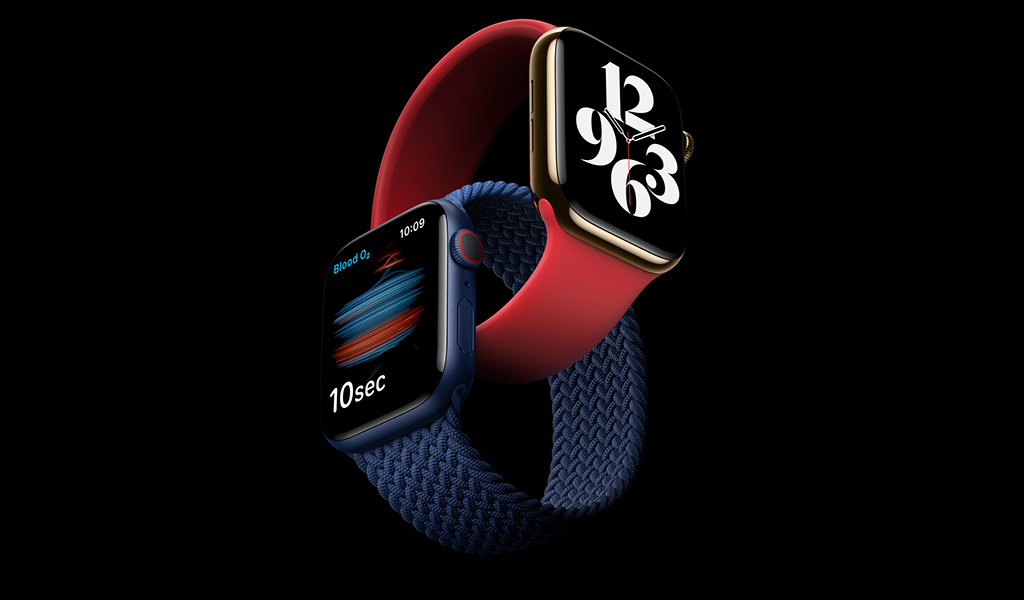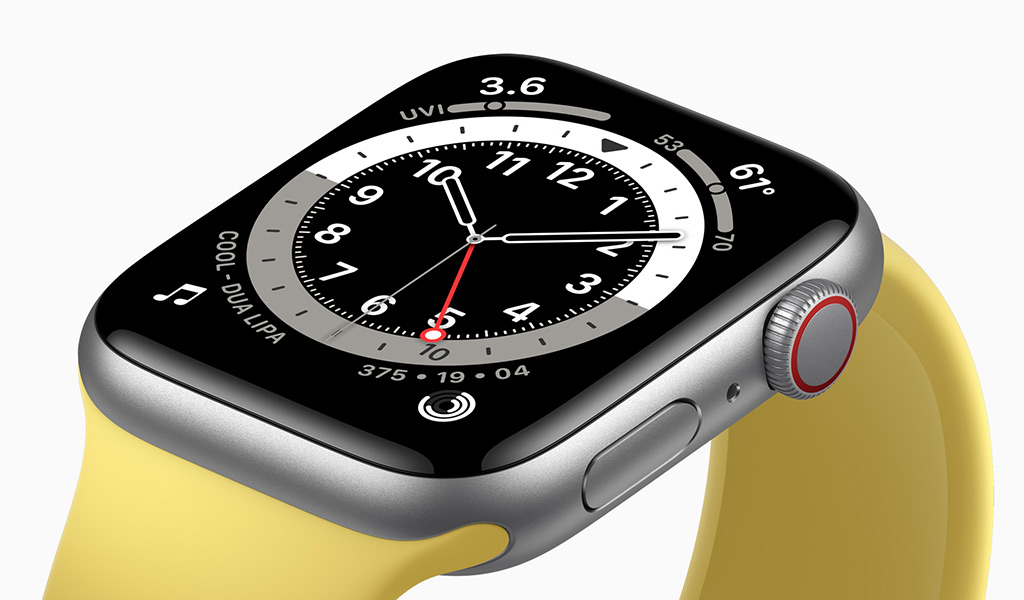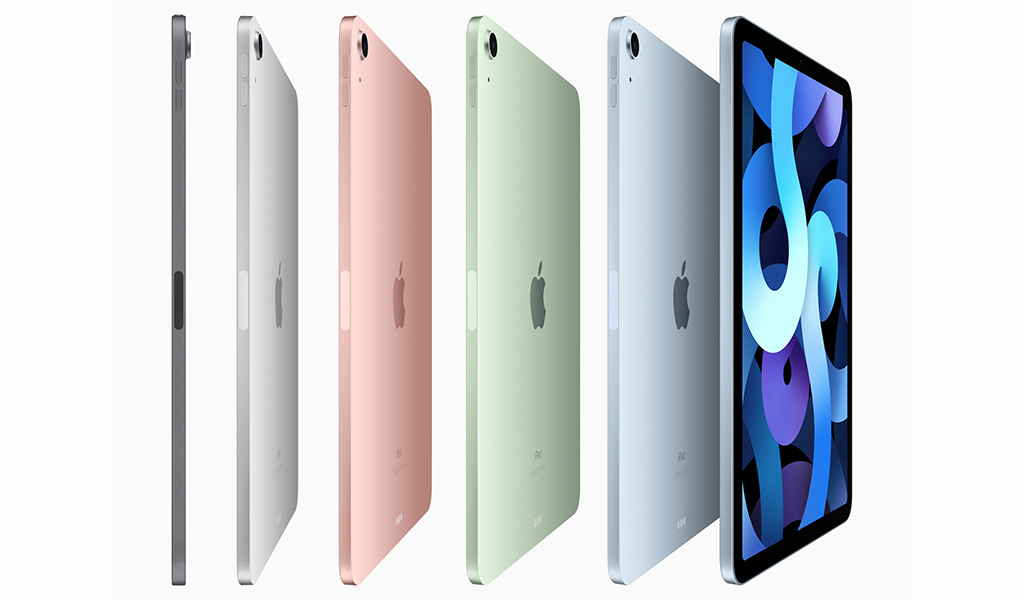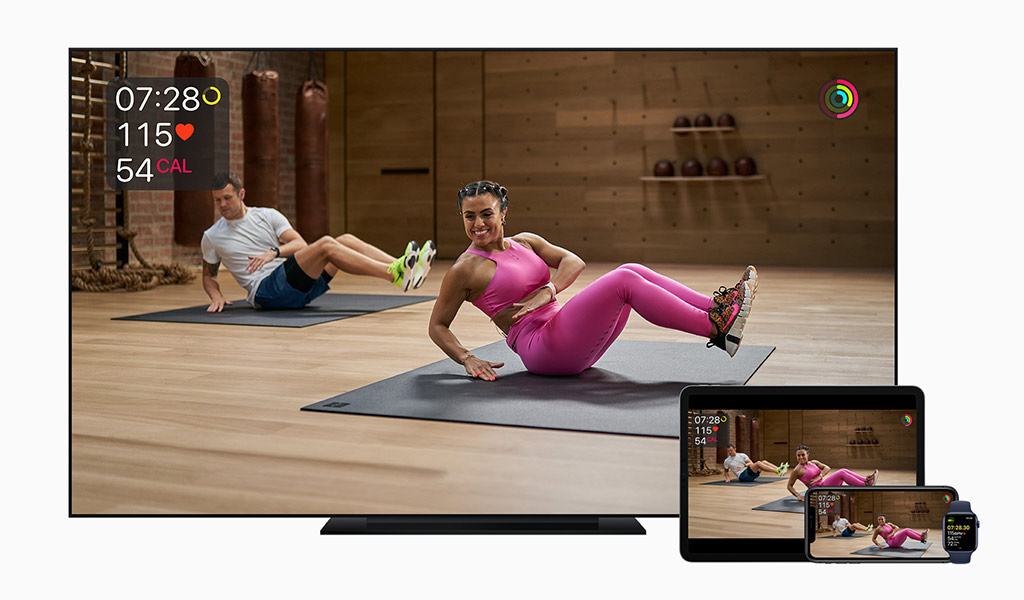
There was no iPhone, but Apple did announce two new Apple Watch models, plus new iPads and an interesting subscription service.
The new devices are continuations of previous models, and in each case, Apple addressed both premium and affordable options. There is an Apple Watch with broader appeal, and an entry-level iPad that takes things a step further than its predecessors.

New Apple Watch 6
The company’s popular smartwatch retains its familiar design, but adds an intriguing feature under the hood. By adding a blood oxygen sensor, Apple enables the Watch 6 to read blood oxygen levels for 15 seconds on demand, or throughout the course of a day to tabulate results. It’s a unique feature that will be available in Canada at launch time.
Despite maintaining the same look, not all things are the same. The Watch 6 runs on the new S6 processor, giving it a 20% bump in speed to start with. Apple also made the screen up to 2.5 times brighter.
It will run on watchOS 7, which will also roll out to the Watch Series 4 and Watch Series 5, and will bring in sleep detection, a hand-washing tracker and some new fitness routines. Gold, graphite and blue are the confirmed colours, with a red one also in the mix.

Introducing the Apple Watch SE
The Watch SE follows a similar pattern to that of the iPhone SE. On the outside, this looks like the Watch 3, but has the components of a later model on the inside. It doesn’t come with more advanced features, like the blood oxygen monitoring, ECG (electrocardiogram) or fall detection, but does offer good fitness and activity tracking.
It does have a 30% larger screen than the Watch 3, so there is extra room to see what’s happening. Apple is also positioning the Watch SE for kids, courtesy of a new Apple Watch Family Setup that can tie multiple watches to one iPhone. Parents will be able to customize how much access kids will have, including who they could communicate with. Not to mention managing location data, among other options.
Though Apple will continue to offer the Watch 3 as more of a budget option, the Watch SE is meant to be an affordable alternative with performance in mind. It will come in gold, silver and space grey with a variety of choices on bands to go with it.

The iPad Air is back
It’s been a while since there was a new iPad Air, but now there is. This is the fourth-generation model, and it sports a different design from the past. The edges are flat and there’s a fingerprint sensor on the side as well, along with a USB-C port at the bottom. You also get a larger 10.9-inch (2360 x 1630) Liquid Retina display, with full support for the Apple Pencil, making this the first tablet outside the iPad Pro lineup to work with the stylus. It’s equally compatible with the Apple Magic Keyboard, so productivity is definitely part of the idea here.
It comes with either 64GB or 256GB of internal storage, and will come in Wi-Fi and LTE variants. You will also see it in different colours, with space grey, silver, rose gold, green and sky blue as your options. Look for this new tablet to become available in October.

The 8th-Gen iPad
Apple upgraded its entry-level tablet with the A12 for a 40% boost in speed. It also works with the Apple Pencil for some added functionality. As it will come with iPadOS 14 out of the box, it will include a new feature called Scribble that converts written words to text you can copy and paste.
Beyond that, there aren’t too many other differences. The 10.2-inch screen size is the same as before, and you can use it with Apple’s (or other brands) keyboard. It comes with either 32GB or 128GB of internal storage, and maintains the space grey, silver and gold colour options.

Fitness+ and Apple One
On the subscription service side, there are two new things. First is Fitness+, a workout service that runs off your iPhone, iPad or Apple TV, where you follow a trainer to do specific workouts. At the start, it will include yoga, cycling, treadmill running, treadmill walking, rowing, strength, core, mindful cooldown and dance.
New workouts will come “every week” and people who participate don’t need to have equipment to do all them all. Beginners will be able to ease in, with suggestions on how to progress. The second is that the Fitness+ app will track all the metrics, like heart rate and calorie burn.
It’s available in Apple’s Fitness app on the iPhone, iPad and Apple TV, and costs $12.99 per month or $99.99 per year. Apple Watch users will get a free one-month trial when it officially launches before the end of the year.
Apple One, on the other hand, is more of a bundle. You pay a flat rate and get multiple Apple services all at once. For a flat monthly fee, you would get Apple Music, Apple TV+, Apple Arcade, Apple News+, Apple Fitness+, and iCloud. And access would apply to the iPhone, iPad, iPod touch, Apple TV and Mac.
The bundled service falls under three different options. Individual is $15.95 per month and comes with 50GB of iCloud storage. Family shares it with up to six family members and includes 200GB of iCloud storage. Premier is the same as Family, except you get 2TB of iCloud storage.
Coming soon
Apple will be launching all of these products and services in the coming weeks. In the meantime, you can check out the latest products from the company here.



